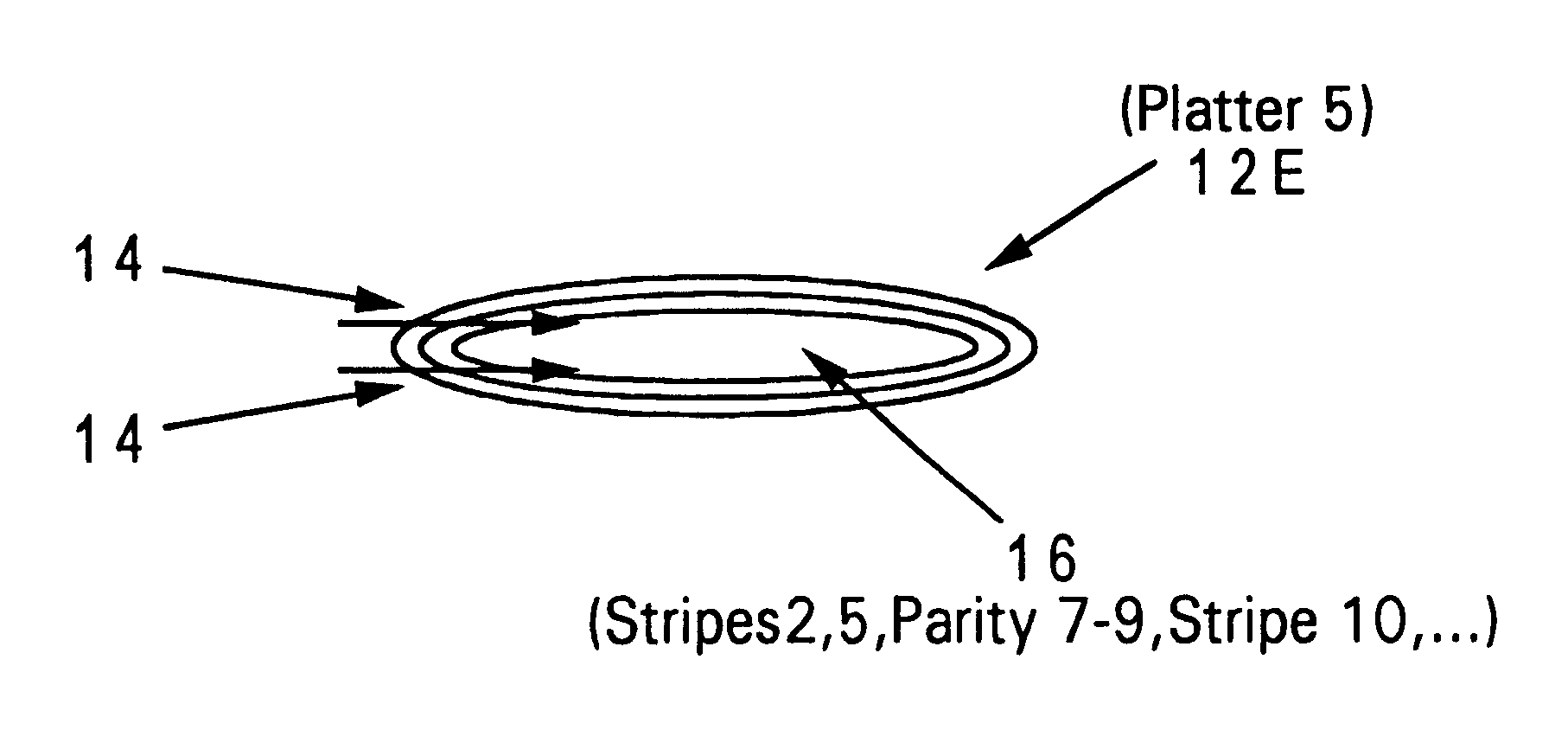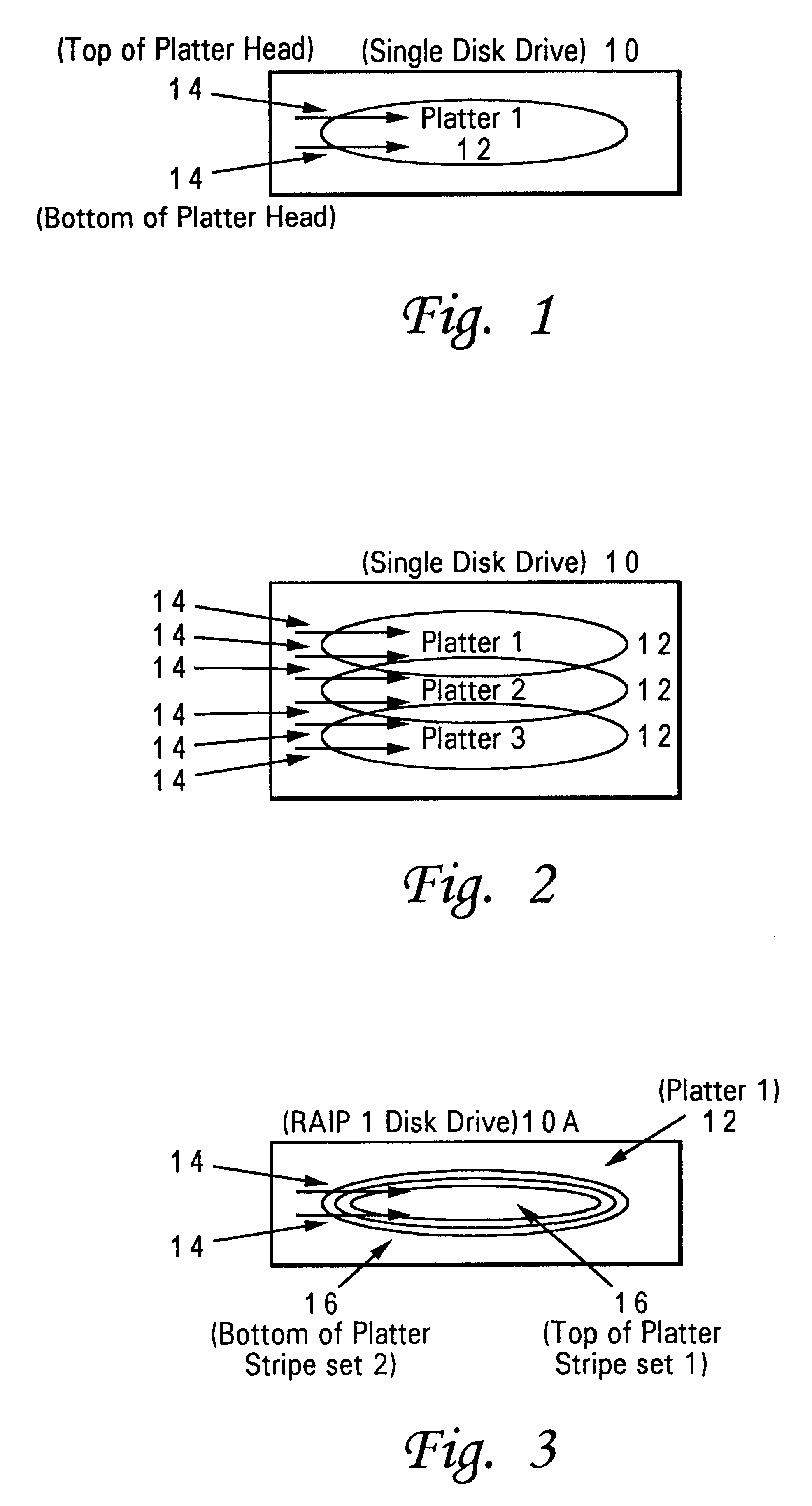Redundant array of inexpensive platters (RAIP)
a technology of inexpensive platters and arrays, applied in the field of inexpensive platter arrays, can solve the problems of poor write performance, higher overhead of required capacity, and the failure of raid 0 to provide redundancy
- Summary
- Abstract
- Description
- Claims
- Application Information
AI Technical Summary
Benefits of technology
Problems solved by technology
Method used
Image
Examples
Embodiment Construction
The present invention uses data management and storage techniques and concepts from Redundant Array of Independent Disks (RAID) technology. These techniques and concepts that are used with multiple disks are incorporated into being used within a single disk drive. Thus, the present invention provides a redundant array of inexpensive platters (RAIP). RAIP is used within a single disk drive having at least one platter and multiple heads. The at least one platter is utilized in the same or similar manner as at least one of the multiple disks in a redundant array of independent disks (RAID). RAIP provides cost advantages over RAID since RAIP only uses a single disk drive while RAID generally uses multiple disk drives. Thus, the present invention RAIP is generally implemented by using each platter of the single disk drive in the same or similar manner as each disk drive of multiple disk drives. In other words, RAIP and RAID parallel each other in that each platter in RAIP generally opera...
PUM
 Login to View More
Login to View More Abstract
Description
Claims
Application Information
 Login to View More
Login to View More - R&D
- Intellectual Property
- Life Sciences
- Materials
- Tech Scout
- Unparalleled Data Quality
- Higher Quality Content
- 60% Fewer Hallucinations
Browse by: Latest US Patents, China's latest patents, Technical Efficacy Thesaurus, Application Domain, Technology Topic, Popular Technical Reports.
© 2025 PatSnap. All rights reserved.Legal|Privacy policy|Modern Slavery Act Transparency Statement|Sitemap|About US| Contact US: help@patsnap.com



